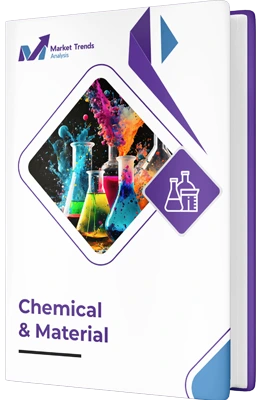
The 1,3 Butadiene Market was valued at USD 15.2 Billion in 2024 and is projected to reach USD 22.8 Billion by 2033, growing at a compound annual growth rate (CAGR) of approximately 5.2% from 2025 to 2033. This growth trajectory reflects increasing demand driven by expanding end-use industries such as automotive, construction, and consumer goods, alongside advancements in production technologies and regulatory compliance. The market's expansion is also influenced by regional shifts in manufacturing hubs and innovations in sustainable production methods. As global economies recover and industrial activities intensify, the strategic importance of 1,3 Butadiene as a key petrochemical will continue to escalate, underpinning its role in the future chemical landscape.
1,3 Butadiene is a colorless, highly reactive, gaseous hydrocarbon with the chemical formula C₄H₆. It is classified as a conjugated diene, characterized by two double bonds separated by a single bond, which imparts unique polymerization properties. Primarily derived from steam cracking of naphtha or ethylene streams, 1,3 Butadiene serves as a fundamental building block in the manufacture of synthetic rubber, plastics, and various elastomers. Its high reactivity makes it essential in industry-specific innovations, especially in producing tires, footwear, and industrial plastics. Regulatory agencies worldwide emphasize safety and environmental standards due to its carcinogenic potential, influencing market dynamics and production protocols.
The 1,3 Butadiene market is experiencing transformative trends driven by technological, regulatory, and consumer behaviour shifts. Industry players are increasingly adopting sustainable production methods, including bio-based routes, to meet stringent environmental standards. The integration of digitalization and Industry 4.0 practices enhances process efficiency and safety, fostering innovation. Market penetration strategies are focusing on emerging regions to capitalize on growing industrialization. Additionally, the rising demand for high-performance rubber and plastics in electric vehicles and renewable infrastructure is shaping future growth trajectories. The convergence of these trends underscores a move towards smarter, greener, and more resilient supply chains.
The demand for 1,3 Butadiene is primarily driven by its critical role in manufacturing synthetic rubber and plastics, which are integral to numerous industries. The automotive sector’s shift towards electric vehicles and lightweight materials is significantly boosting the need for high-quality elastomers. Rapid urbanization and infrastructure development in emerging economies further fuel consumption, especially in construction and consumer goods. Additionally, technological advancements in production processes have enhanced yield efficiencies, reducing costs and environmental impact. Regulatory pressures to limit emissions and hazardous substances are also prompting innovations that align with sustainable development goals, thereby creating new market opportunities.
Despite positive growth prospects, the 1,3 Butadiene market faces significant challenges. The carcinogenic nature of the chemical necessitates strict regulatory oversight, which can lead to increased compliance costs and operational restrictions. Fluctuations in crude oil prices directly impact feedstock costs, influencing overall profitability. Environmental concerns related to emissions and waste management are prompting stricter controls, potentially limiting production capacity. The advent of alternative materials and bio-based substitutes poses a competitive threat, especially in eco-conscious markets. Additionally, geopolitical tensions and trade barriers can disrupt supply chains, affecting market stability and pricing strategies.
The evolving landscape of the 1,3 Butadiene market presents numerous opportunities for strategic growth. Innovations in bio-based and sustainable production routes can reduce environmental footprints and meet regulatory standards, opening new market segments. The rising demand for specialized elastomers in high-tech industries like aerospace, healthcare, and renewable energy offers lucrative avenues. Strategic collaborations and joint ventures can facilitate technology transfer and capacity expansion in emerging economies. Digital transformation initiatives can optimize supply chains and enhance safety protocols, creating competitive advantages. Furthermore, increasing consumer awareness and preference for eco-friendly products are driving brands to adopt greener raw materials, fostering market penetration strategies.
Looking ahead, the 1,3 Butadiene market is poised for a paradigm shift driven by industry-specific innovations and sustainability imperatives. The future envisions a transition towards bio-based and circular economy models, reducing reliance on fossil fuels. Advanced polymerization techniques will enable the creation of high-performance, eco-friendly elastomers tailored for electric vehicles, smart infrastructure, and wearable technologies. Integration with Industry 4.0 will facilitate smarter manufacturing, predictive maintenance, and enhanced safety standards. As regulatory landscapes tighten, companies will innovate to meet compliance while exploring new applications such as biodegradable plastics and advanced composites. The market will increasingly focus on sustainable growth, aligning with global climate goals and consumer preferences for greener solutions.
1, 3 Butadiene Market was valued at USD 15.2 Billion in 2024 and is projected to reach USD 22.8 Billion by 2033, growing at a 5.2% from 2025 to 2033.
Growing automotive industry, especially EVs requiring specialized rubber components, Expansion of construction and infrastructure projects in developing regions, Technological innovations improving production efficiency and safety, Stringent environmental and safety regulations encouraging cleaner production, Increasing demand for high-performance polymers and elastomers, Strategic investments in capacity expansion and regional market penetration are the factors driving the 2d sensor market.
The Top players operating in the 1, 3 Butadiene Market are ExxonMobil Chemical, Shell Chemicals, INEOS Group, Braskem, LG Chem, Yokohama Rubber Company, Sumitomo Chemical, Jiangsu Sanmu Group, Asahi Kasei Chemicals, Shandong Yuhuang Chemical, Liangyou Group, Formosa Plastics Corporation, Reliance Industries, Huntsman Corporation, Celanese Corporation.
1, 3 Butadiene Market is segmented based on End-Use Industry, Product Type, Distribution Channel And Geography.
The sample report for the 1, 3 Butadiene Market can be obtained on demand from the website. Also, the 24*7 chat support & direct call services are provided to procure the sample report.